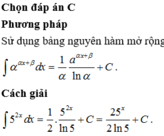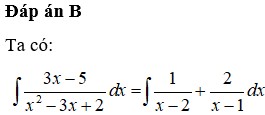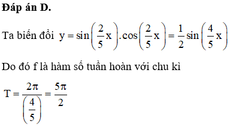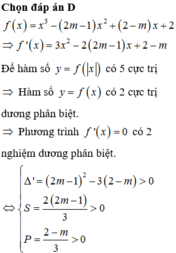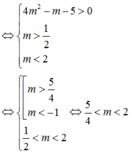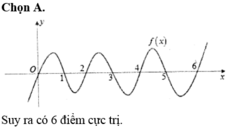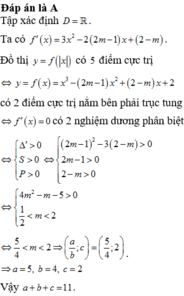Hãy nhập câu hỏi của bạn vào đây, nếu là tài khoản VIP, bạn sẽ được ưu tiên trả lời.

Đáp án C.
Hàm số liên tục nếu:
lim x → − 2 + f x = lim x → − 2 − f x = f 2 ⇔ 3. − 2 − 5 = − 2 a − 1 ⇔ a = 5.

Chọn đáp án C
Phương pháp
Sử dụng công thức nguyên hàm:
![]()
dựa dữ kiện đề bài tìm được C, từ đó tính F(2)-F(-1)
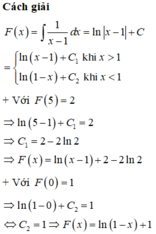


a,\(\dfrac{3x+5}{x-2}=3+\dfrac{11}{x-2}\)
\((3x+5)\vdots (x-2)\) \(\Rightarrow\)\(\dfrac{3x+5}{x-2}\)nguyên \(\Rightarrow \dfrac{11}{x-2}\)nguyên
\(\Rightarrow 11\vdots(x-2)\Rightarrow (x-2)\in Ư(11)=\{\pm1;\pm11\}\)
\(\Rightarrow x\in\{-9;1;3;13\}\)
b,\(\dfrac{2-4x}{x-1}=-4-\dfrac{2}{x-1}\)
\((2-4x)\vdots(x-1)\Rightarrow \dfrac{2-4x}{x-1}\)nguyên\(\Rightarrow \dfrac{2}{x-1}\)nguyên
\(\Rightarrow 2\vdots(x-1)\Rightarrow (x-1)\inƯ(2)=\{\pm1;\pm2\}\\\Rightarrow x\in\{-1;0;2;3\}\)
c,\(\dfrac{x^{2}-x+2}{x-1}=\dfrac{x(x-1)+2}{x-1}=x+\dfrac{2}{x-1}\)
\((x^{2}-x+2)\vdots(x-1)\)\(\Rightarrow \dfrac{x^{2}-x+2}{x-1}\)nguyên \(x+\dfrac{2}{x-1}\)nguyên\(\Rightarrow \dfrac{2}{x-1}\)nguyên
\(\Rightarrow 2\vdots(x-1)\Rightarrow (x-1)\inƯ(2)=\{\pm1;\pm2\}\\\Rightarrow x\in\{-1;0;2;3\}\)
d,\(\dfrac{x^{2}+2x+4}{x+1}=\dfrac{(x+1)^{2}+3}{x+1}=x+1+\dfrac{3}{x+1}\)
\((x^{2}+2x+4)\vdots(x+1)\Rightarrow \dfrac{x^{2}+2x+4}{x+1}\in Z\Rightarrow \dfrac{3}{x+1}\in Z\\\Rightarrow3\vdots(x+1)\Rightarrow (x+1)\in Ư(3)=\{\pm1;\pm3\}\\\Rightarrow x\in\{-4;-2;0;2\}\)
